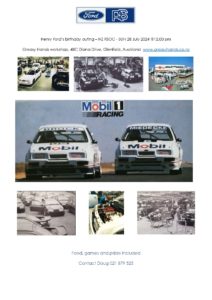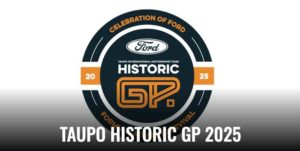Ford’s 1987 Sierra RS500 Cosworth combined race-winning power with equally high levels of comfort. A total of 500 Sierra RS Cosworth’s were put aside and sent to Tickford for conversion, to become the Sierra RS500 Cosworth. They were all intended to be black, but a few White and Moonstone blue cars slipped through.
All factory built Sierra RS500 Cosworth cars have a VIN within the range WFOEXXGBBEGG38600 to WFOEXXGBBEGG39099.
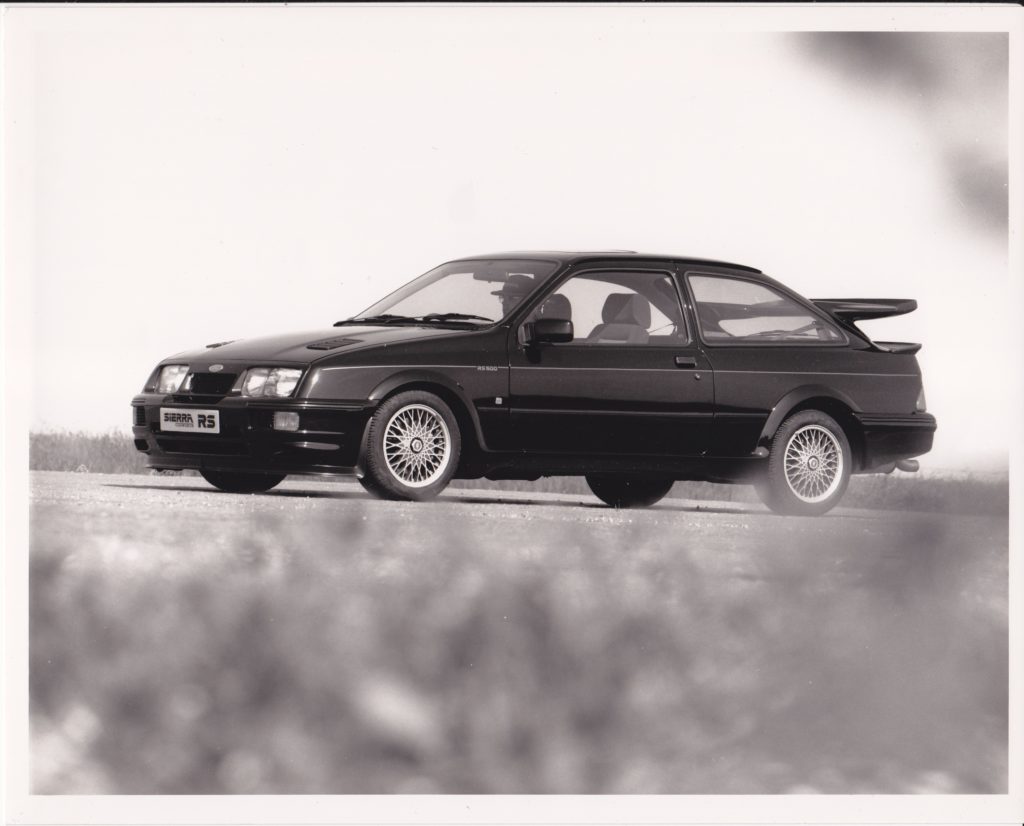
The cockpit features superb cloth-trimmed Recaro seats carefully shaped to provide support. Neat instruments supplemented by warning lights are clearly visible through the padded sport type steering wheel, a tilt-or-slide glass sunroof and a leather trimmed gear lever knob.
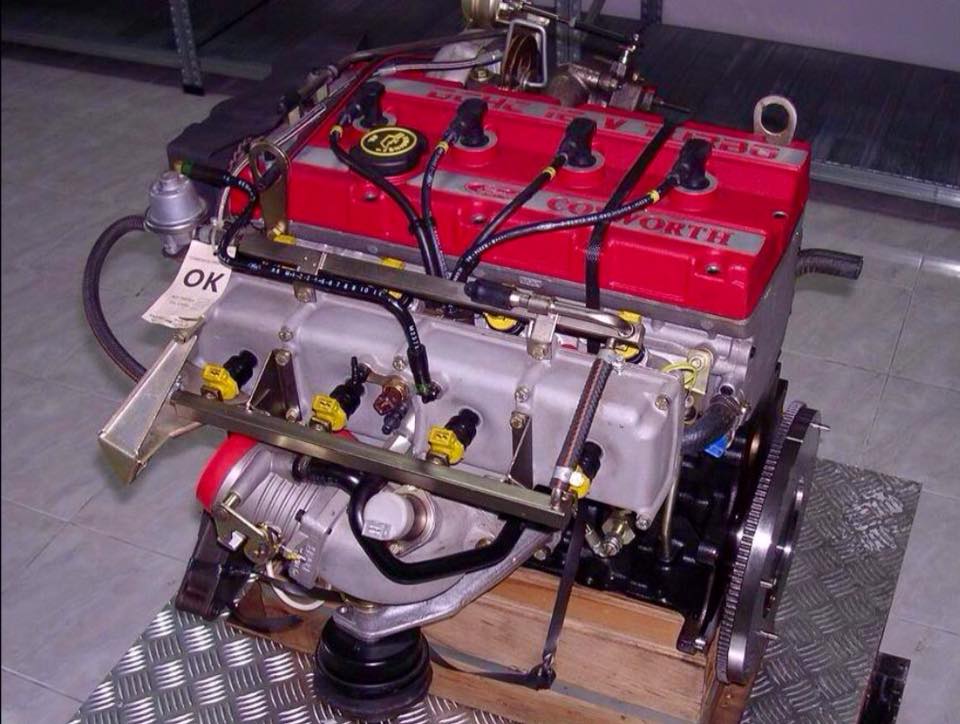
The new Sierra RS500 Cosworth had one of the most remarkable engines ever produced by the phenomenally successful Ford-Cosworth partnership. In standard form it develops 224 PS and proved capable of accelerating the three-door hatchback from zero to 60 mph in just 6.2 seconds when tested on Ford’s proving ground. Power soars to an astonishing 450PS when the turbocharged 2-litre is fully tuned for the racetrack.
Based on a production Ford cylinder block, the four-cylinder engine has an extremely efficient light-alloy head. Twin overhead camshafts, driven by a toothed belt of rubber reinforced with glass -fibre, operate four valves per cylinder. The head is cast by a process that avoids the risk of contamination by drawing alloy straight from furnace to mould. There is no contact with the air until the metal has solidified.
Power is boosted by a Garrett AiResearch turbocharger with an air-to-air intercooler. Multipoint fuel injection and electronic ignition are controlled by a very advanced engine management system. So is the waste gate, which acts as a safety valve for the turbocharger. Peak efficiency is maintained by sensors that refer vital information to a ‘map’ in the system’s computerised memory.
Features engineered to combat high operating temperatures include sodium-filled exhaust valves, and oil jets directed at the underside of the forged aluminium pistons. The piston crowns have a shallow bowl shaped to create the carefully controlled ‘squish’ combustion characteristics essential for low exhaust emissions and good economy.
Forged, heat-treated connecting rods join the pistons to an extremely robust, forged-steel crankshaft with five main bearings. At the bottom of the engine, a die-cast aluminium sump saves weight and also improves oil cooling. There are nine flywheel attachment bolts, instead of the six used on other Sierras, and power is fed to the five-speed gearbox through a special heavy-duty clutch.
The main differences between the Sierra 3-door Cosworth and the RS500 were –
- The engine had a thicker walled cylinder block to cope with the rigours of the track.
- A larger Garrett T31/T04 turbocharger.
- A larger air-air intercooler.
- A second set of 4 fuel injectors and a second fuel rail (unused in the road going version)
- The fuel pump was up rated.
- A reworked induction system to allow higher power output.
- The oil and cooling system were both also up rated.
- The rear semi-trailing arm beam had extended but unused mounting points.
The RS500 also had minor external cosmetic differences to the original Sierra 3 door Cosworth.
- The rear tail gate had a lower spoiler in addition to the upper whale tail, which had an extra added lip.
- Discrete RS500 badges on the rear tail gate and front wings.
- A redesigned front bumper and spoiler to aid cooling and air flow, including the removal of the fog lamps, were replacement with intake grilles to supplement brake cooling.
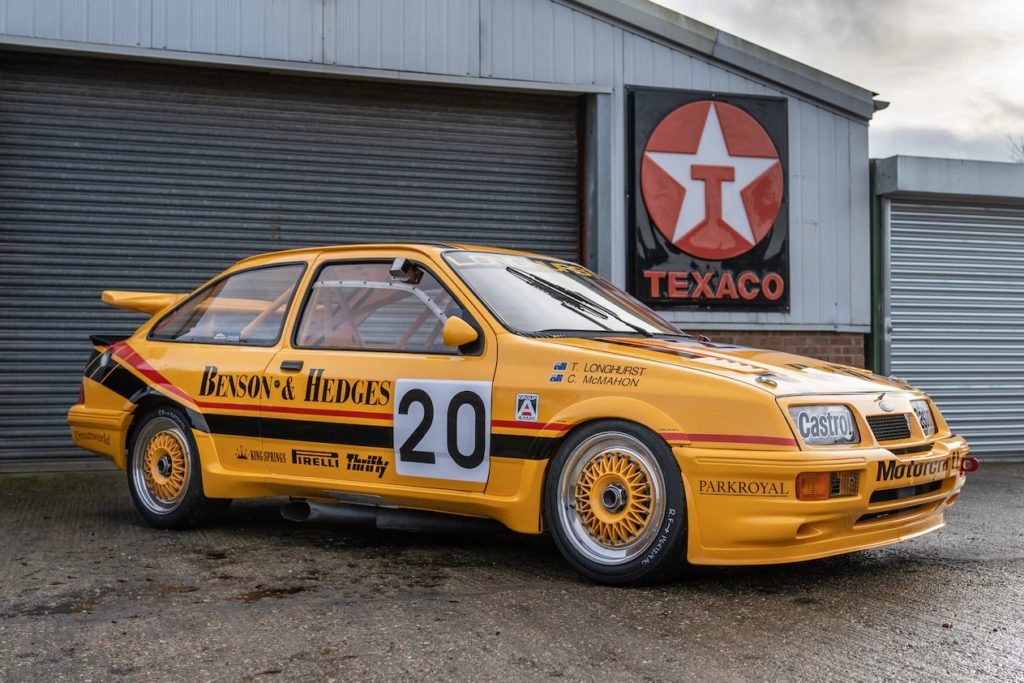
Racing versions of the Cosworth were highly successful in European and World touring car racing throughout the late 1980s and early 1990’s, the RS500 helped Ford to win the manufacturer’s title in the 1987 World Touring Car Championship, as well as the Australian Touring Car Championship.
The Sierra RS500 Cosworth was truly the king of World Touring Car Racing.
